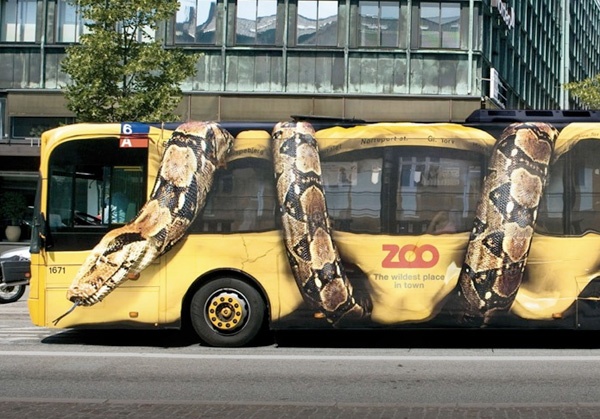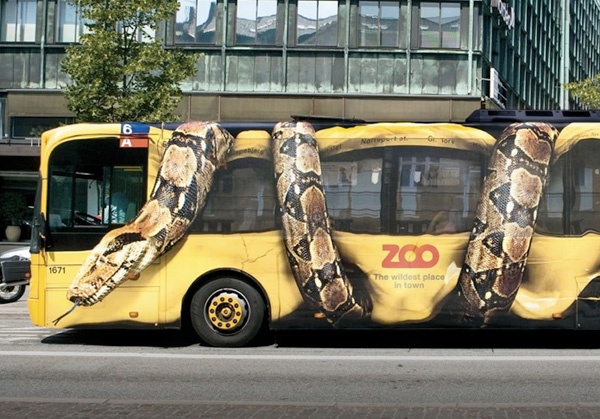
Guerrilla marketing can be a surprisingly effective means of gaining awareness and strong brand positioning. The benefits of a successful campaign or event include:
- Position your brand with impact
- Gain instant awareness, hopefully even go viral
- Motivate staff and encourage a cohesive team
- Strengthen recruitment and attract like-minded candidates
So the allure is obvious, but is guerrilla marketing still within the arsenal of small and medium-sized business?
From Wikipedia: The term “guerrilla marketing” is traced to guerrilla warfare, which employs atypical tactics to achieve an objective. In 1984, the term guerrilla marketing was introduced by Leo Burnett’s creative director Jay Conrad Levinson in his book Guerrilla Advertising.
Levinson was a brilliant marketer, and perhaps his interest in such tactics stems from the late 1960s with John Cleese appearing in a bikini saying “And now for something completely different.” Cleese turned a typical and boring “And now a message from our sponsors” message on its head with drama and comedy. In three seconds he cut through both the noise and monotony to earn your rapt attention. (Marketers can learn a lot from watching Monty Python.)
But guerrilla marketing is not simply shock and/or awe, there needs to be a strategic intent. On YouTube, there is a limitless supply of testosterone addled young males willing to do stupid stunts à la Jackass. Slapping a corporate T-shirt on someone as they ride a bicycle off a 20’ cliff into a children’s pool filled with Jello has limited value. The key consideration is not just being noticed, but associating your brand with a positive experience or outcome. Simply getting people’s attention isn’t branding.
Here is a smart example of positioning a brand or concept; who wouldn’t want to check out the Copenhagen Zoo after seeing this bus in downtown Copenhagen? Check out creativeguerrillamarketing.com for many examples of effective, fun and incredible in-your-face and experiential marketing.

By definition, guerrilla marketing employs atypical tactics. And may seem more difficult to successfully pull off a stunt today, with the public’s sense of awe dulled by years of reality television and YouTube binge watching, but some still rise to the challenge.
Remember when flash mobs were popular? Seemingly, out of nowhere strangers started dancing and joining a choreographed number. The public was typically mesmerized and overcome with joy at having stumbled into a Bollywood moment. Marketers and corporations were quick to see their value and dreamed of long-lasting brand attention with viral video play. Originally associated with low cost and a one-time or short-lived event, once corporations jumped on the band wagon these attributes went by the way-side — big budgets, slick production and involved campaigns replaced sweat equity.
Planning and successfully implementing guerrilla marketing is not easy It requires an out of the box or novel idea, great creative and coordination, superior planning and logistics… a truly talented team is required, and the finances to pay for it. But, if you have the resources and you can pull it off, the effect can be tremendous.
Perhaps Coke launched the biggest guerrilla marketing blitz yet with their campaign for Coke Zero, which (uncharacteristically for guerrilla marketing) uses virtually all forms of advertising (albeit interactively). A very sophisticated, technologically advanced, and expensive marketing campaign that is most definitely unexpected. (Check out their YouTube overview.)
These days, with higher public expectations, and the need to support with a large media buy and significant logistics to navigate, it seems that only large corporations have the financial strength to play with the guerrillas. Perhaps smaller firms can take advantage of social media to even the playing field a bit, and the PROSAR team will explore that in a future blog article. For now, what are your thoughts on the use of guerrilla marketing by smaller companies, or better yet, do you have an example of how it has worked for your company?






![Only 8% of Sales Leaders Prioritize Social Sales [New Data]](https://www.parsonref.ca/wp-content/uploads/2016/06/GettyImages-516755216.jpg)


